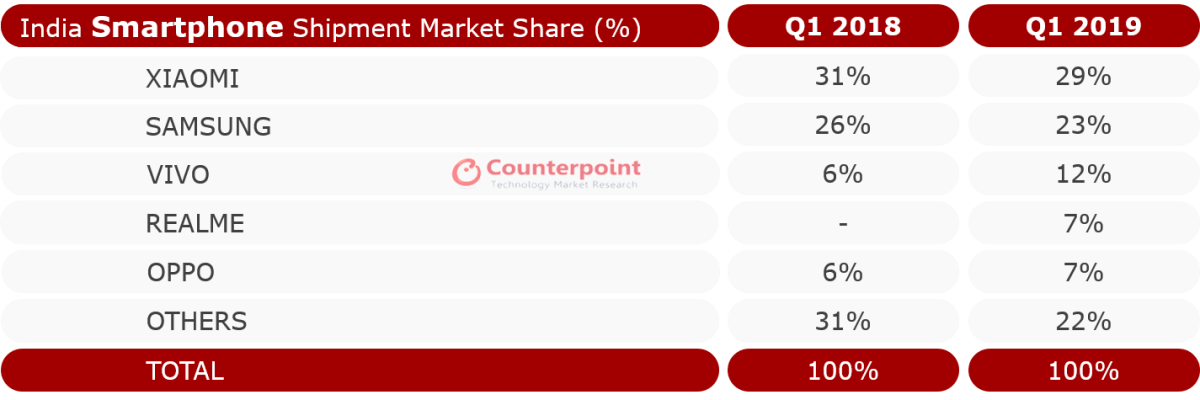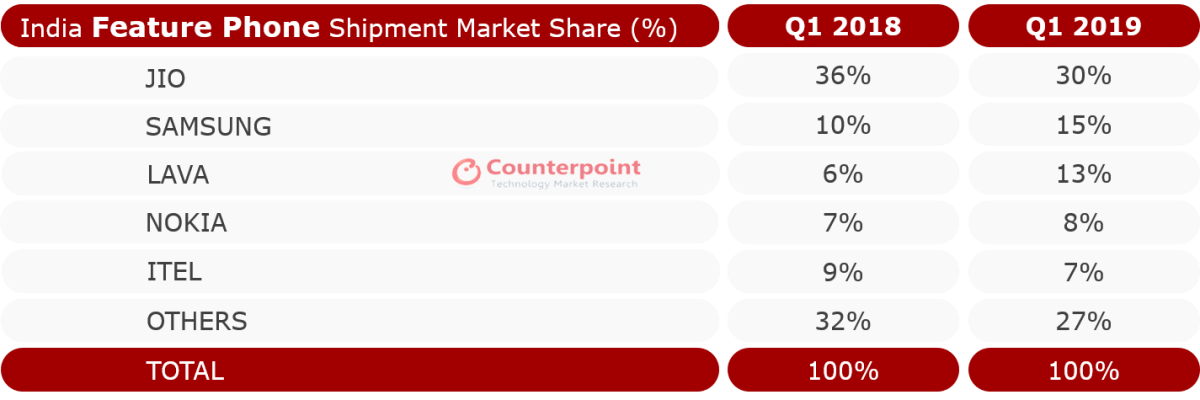Chinese smartphone makers have increased their dominance over the Indian market in Q1 2019. Counterpoint research report reveals that four of the top five smartphone companies in India are Chinese and they have captured a solid 66% market share in the previous quarter of the year.

Xiaomi’s market share dropped slightly from 31% in Q1 2018 to 29% in Q1 2019, while Vivo saw a significant rise in its market share during the same period. It went up from just 6% last year to a staggering 12% in the first quarter of this year. Even Realme saw a quick rise in its market share, capturing a decent 7% share of this highly competitive market. OPPO’s market share increased slightly to 7%.

Samsung’s smartphone shipment market share dropped slightly to 23% in the previous quarter, down by 3% YoY. However, the company gained some moment in the feature phone market with an increase from 10% in Q1 2018, to 15% in Q1 2019. Jio still dominates the feature phone segment with 30% market share. The report further notes that the company’s Galaxy S10 series is doing well in the country, driving up its Average Selling Price (ASP) in the region.
Other brands which managed to do well in the Indian market include ASUS, especially in the budget segment, thanks to its Zenfone series. Tecno, and Nokia HMD are doing well too. The rise in the market share of Chinese brands has naturally led to the decline of the Indian brand shipments. The previous quarter recorded the lowest ever market share of shipments from local Indian brands.

Another important point mentioned in the report was that Samsung has surpassed OnePlus in Q1 2019 to become the number one smartphone maker in the premium segment. Given that OnePlus 7 Pro is slated to release on May 14, we could see some changes in this particular segment in the coming quarters.
Finally, most smartphone companies are making a strong push into retail sales. Xiaomi, OnePlus, and even Realme benefitted from an increased focus on brick and mortar stores. So, we could expect the strategy to continue in the coming quarters.
(Source)







